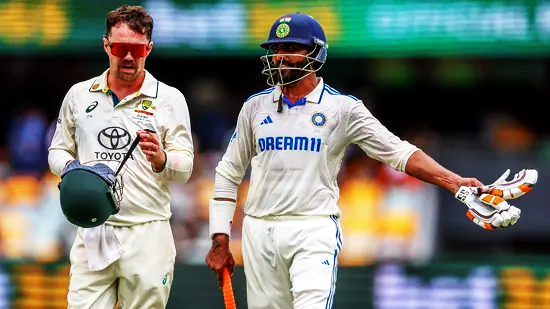
Cricket has a unique way of building drama, and nowhere is that more evident than in the high-stakes pressure of a Test match. When India faces the challenge of chasing or matching Australia’s total of 246 at Brisbane’s iconic Gabba, a looming question arises: What happens if they fall short? The follow-on rule, a defining aspect of Test cricket, could come into play—and it can significantly tilt the balance of the game.
Understanding the Follow-On Rule
In a Test match, the follow-on rule comes into effect when the team batting first achieves a lead of at least 200 runs over the opposition. If the second batting team fails to score enough to stay within that margin, the captain of the first team can enforce a follow-on. This means the trailing team must bat again immediately instead of waiting for the usual innings switch. The follow-on forces the underperforming side into an immediate uphill battle, where they must either overturn their deficit or avoid defeat by batting for time.
In the context of India’s hypothetical failure to reach the 246-run mark against Australia at the Gabba, this rule would grant Australia a massive advantage. By enforcing the follow-on, Australia could put India under immense pressure, not only to erase the deficit but also to survive and turn the match around.
Psychological Pressure and the Gabba Factor
The Gabba, often referred to as Australia’s fortress, adds an extra layer of tension. Known for its fast pitch, pace-friendly bounce, and intimidating crowd, the ground has historically been a nightmare for visiting teams. Enforcing a follow-on at the Gabba is akin to doubling down on home advantage.
For India, being asked to bat again immediately after falling short of 246 would mean enduring another stern test against Australia’s fierce pace attack. With bowlers like Pat Cummins, Josh Hazlewood, and Mitchell Starc capable of exploiting every inch of the Gabba’s surface, fatigue and psychological strain could mount quickly for India’s batters.
The follow-on not only tests skill but also mental toughness. The memory of trailing and being sent back in to bat can weigh heavily on players, often resulting in unforced errors and defensive gameplay. Australia would seize this opportunity to tighten their grip on the game, piling on pressure for wickets while the clock ticks toward a result.
Consequences of a Follow-On
For India, the consequences of failing to reach the 246-run target would be multifaceted. First, the team would lose control over the flow of the match, ceding momentum entirely to Australia. Second, it would force them to adopt a survival-first approach, likely compromising their natural batting style. Playing conservatively might help avoid a collapse, but it also increases the risk of handing Australia enough time to chase down a fourth-innings target, should they need one.
Moreover, the burden on India’s bowlers would grow exponentially. After already toiling in the first innings, they would likely be needed again in the match, increasing the risk of fatigue and injury.
A Test of Character
While the follow-on rule can seem like a death knell for the trailing team, cricket has seen many inspiring comebacks after follow-ons were enforced. India’s own historic victory at Eden Gardens in 2001 against Australia is a shining example of resilience under pressure. Teams that find themselves staring down the follow-on must tap into extraordinary reserves of self-belief, discipline, and grit.
In conclusion, if India falls short of 246 at the Gabba, Australia will have the chance to enforce the follow-on, placing India under immense pressure. However, Test cricket is about more than numbers—it’s about heart, determination, and the will to fight. For India, such a scenario would serve as a crucible, a test of both character and skill in one of cricket’s toughest arenas. Whether they crumble or rise would not only define the match but also etch their story into cricketing folklore.
